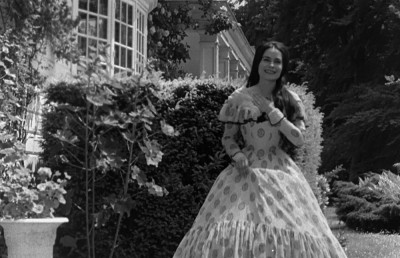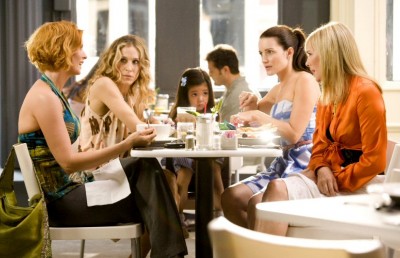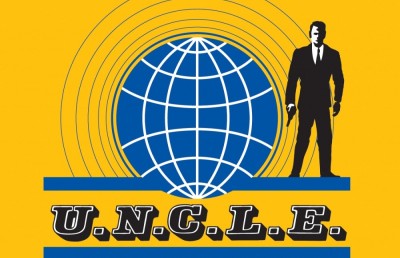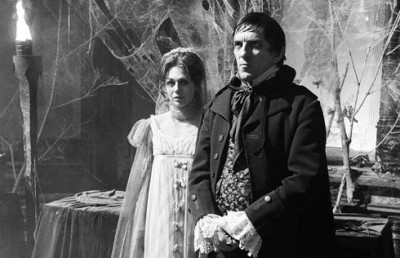TV Horror: Covering the Televisual Horror Landscape
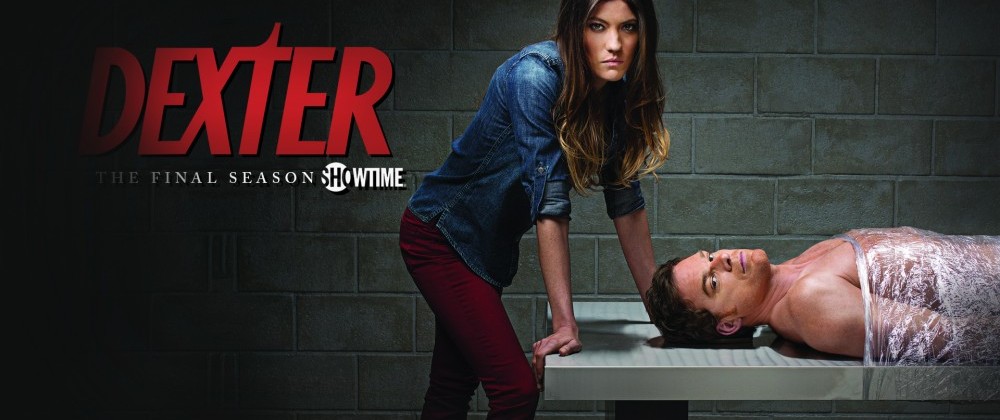
TV Horror: investigating the dark side of the small screen
by Lorna Jowett and Stacey Abbott
I.B. Tauris, 2013
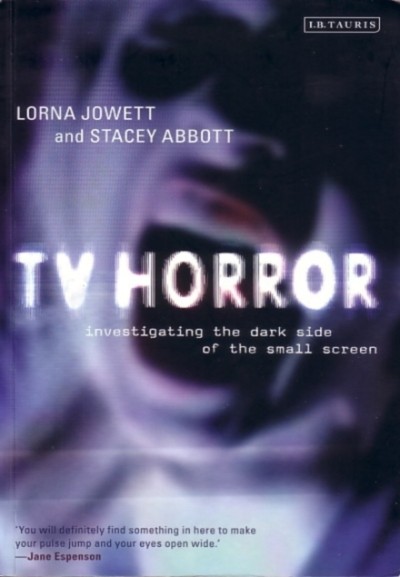
One of the major aims of the new book TV Horror, which looks at televised horror from its golden days to today, is to demonstrate that the tensions that surface between television and horror, manifested in mainstream taste and major broadcasting concerns regarding levels of violence, for example, can work for rather than against dramatic horror. This adage recalls the great theorist Rudolf Arnheim’s central belief that every art form succeeds because of its limitations. In their introduction Lorna Jowett and Stacey Abbott make the important observation that the hybrid nature of television has led to horror being crossed over into other genres (children’s programming, drama, comedy, police procedural, etc.), which has in turn forced viewers (and indeed critics) to rethink what horror is and can be in a “television context” (xiii). The diversity of TV is in a sense well-matched to the diversity of style, content and approach that exists across the horror genre (p. 2). The book is broken down into ten chapters that cover horror as a product of the television industry (Chapter 1), as an element within TV’s innate hybridity (Chapter 2), on narrative (Chapter 3), adaptation (Chapter 4), authorship (Chapter 5), questions of style (Chapter 7), audiences (chapter 10), and case studies on gothic (Chapter 6), art house (Chapter 8), and a meta-analysis of television as an ‘object’ of horror hence ideally suited to representing horror (Chapter 9).
I can attest first hand at another key observation the book makes that grounds horror and television into the consciousness of every horror fan: television has helped shape many generations of horror fans and filmmakers because it provided them their first exposure to cinematic horror as children cowering behind their sofa or peering out from under their blanket. Too young to go see horror films at the theatre, watching them in the sanctity of their home, usually without the parent’s consent, made horror films something of a taboo, and hence all the more sensational. I can attest to this when I was about 12 years old and my uncle, older by seven years, helped me stay up until midnight, throwing cold water on my face, so I can watch my first horror film –on TV– the (quite tame) I Was a Teenage Werewolf.
Horror has been a mainstay of television programming since the 1950s. The casual horror fan will no doubt be familiar with shows like Twilight Zone, Outer Limits, perhaps Night Gallery and more recently, X-Files and Masters of Horror; but they would be surprised to know of so many other horror shows that were part and parcel of television’s past: the first ever horror show, Thriller (hosted by Boris Karloff from 1960-62), One Step Beyond (which beat Twilight Zone to the airs by nine months, debuting on July 4, 1961), The Veil, Mystery and Imagination, Alfred Hitchcock Presents (featuring the occasional horror episode, and hosted by Alfred himself), Kolchak: The Night Stalker, Millennium, Dark Shadows, Supernatural, Are You Afraid of the Dark?, and many others (IMDb lists 899 shows under “Most Popular Horror TV Shows”!). We learn from the book that TV scholars have periodized TV into three eras, 1950-1975 (TV1), 1975-1990s (TV2) and 1990s-presnt (TV3).
Chapter 1 is spent discussing the industrial interaction of horror and TV across two ideologically different markets, the more “public service” oriented UK market and the more commercial US market. With TV in its infancy, issues of technological limitations (large, bulky cameras, for example) impacted content, and horror was often an important area for narrative experimentation, starting with the hugely important science-fiction/horror show, The Quatermass Experiment (1953, and the first TV show to be adapted to film). The much smaller screen size (averaging 17-21 inches) led to the dominance of the close-up in TV, but rather than use the close-up for intimacy, horror shows used the close-up to shock and frighten (the authors use an example from the The Quatermass Experiment of the shot where a astronaut falls face forward toward the camera) (p. 4). Rather than being the constant antagonists they are often projected as, TV and Cinema learned to feed off each other during this period, with movie stars working on TV (Boris Karloff, Peter Lorre, Lon Chaney Jr., Alfred Hitchcock) and the film industry profiting from the growing need of products to use TV as a source of untapped income by selling their back catalogue of films (which also had the ripple effect of giving a second life to their films, such as the Universal horror line, by exposing them to a younger generation). Indeed an episode of Route 66 (June 3, 1962) that the authors note starred Karloff, Lorre and Chaney foreshadowed the “is-old-horror-still-scary” thematic of Peter Bogdanovich’s 1968 Targets (also starring Karloff). This period also saw the return of the less explicit Gothic drama, in light of more modern cinematic horrors of Psycho and Night of the Living Dead), and the flowering of Dan Curtis as a TV auteur with his series of Gothic made for TV adaptations (Dracula, Frankenstein, Dr. Jekyll & Mr. Hyde) and of course the daytime soap opera Dark Shadows (p. 6)
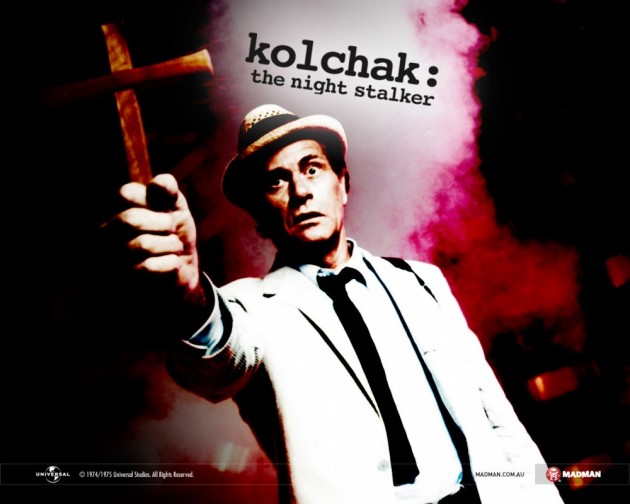
The TV2 period (1975-1990) is noted as the transition period between the network and digital eras, with the appearance of home video equipment changing the dynamic of viewing habits, and resale value of TV; and new networks, cable and satellite stations challenging the ‘big three’ networks (NBC, ABC, CBS). This period is also marked by the groundbreaking shows Twin Peaks and X-Files, which brought a visual and narrative complexity to the small screen. Another breakthrough show of vast influence in this period was the film adaptation, Buffy the Vampire Slayer (1997-2003). Abbott and Jowett note how the ambiguous characters and moral grey areas of these shows led to the many monster protagonists that appeared in the next post-1990s period, TV3 (a trend which is continuing to rise with such shows featuring serial killer protagonists, Dexter, Hannibal and The Bates Motel). The groundbreaking shows also shaped the marketing dynamic, with niche markets on cable and pay TV entering the fray (younger, female-driven, geeks, etc.) and genre hybridity (especially in Buffy) seeing the shows aligned with the discourse of postmodernism (indeed TV itself is often seen as the quintessential postmodern art form, another reflection of how well suited horror can be to TV). The rise of home video helped push the horror serial, rather than the one-off show format, by tapping into the ability to record and self-control one’s viewing (fans will often binge view a whole 12 or 13 week serial over a few nights) and collect shows for later viewing. Specialty niche pay networks AMC, HBO (which launched the art horror show Carnivàle) and Showtime exploited the improved visual quality of home TV (larger screens, high definition, 3-D screens, PVRs) to push the envelope with regards horror show special effects.
Chapter 2, “Mainstreaming Horror,” demonstrates how TV helped level out horror by incorporating its elements into more mainstream genres such as police investigation series, hospital drama, comedy, and children’s television. For example, the way hospital dramas and police shows dish out high levels of physical and bodily violence (autopsies, injured and mutilated corpses, etc.). The authors make some interesting observations about horror and children’s television/comedy. Standout TV1 shows like The Addams Family and The Munsters helped establish the link between classic horror and a new generation of fans. Sesame Street, a show aimed also at the pre-school child, continued this bond between classic horror and the young with the playful “Count von Count” recurring character. Being less tied to the rigors of the adult world, children’s horror shows were more free to blend a child-like imagination into the narrative worlds, with fantasy, comedy and mystery sharing equal aesthetic hold, with shows like Scooby-Doo, Frankenstein’s Cat, and Rentaghost. Another example not cited in TV Horror is a recent (2010-) Canadian-US children’s show, Dino Dan, which features a young budding paleontologist boy named Dan Henderson. The show blends the worlds of realism/adulthood and children’s imagination by fusing live action with CGI, the latter used to incorporate the living dinosaurs into the ‘real’ world. However, it is never clearly stated whether the dinosaurs are real or a product of Dan’s vivid imagination, which relates well to the authors citing of Tzvetan Todorov’s theory of the Fantastic (p. 27) to explain how many children’s TV horror shows maintain a narrative suspension in plot elements which hover between a supernatural or natural (uncanny) explanation of events. The ambiguity maintained in Dino Dan between whether the dinosaurs are real or a product of Dan’s over-active imagination is a perfect illustration of Todorov’s theory of the Fantastic in children’s TV programming. Children’s TV horror can also be progressive from a gender stand-point, with many shows featuring girls as the lead characters and the assumed maleness of horror sometimes ridiculed in the plots (Frankenstein’s Cat, p. 28).
Perhaps these children’s horror shows are a way for the industry to ‘groom’ a future generation of horror fans? Indeed, do children innately like scary things and like being scared? The authors cite a study on children’s TV by Máire Messenger-Davies, who writes, “Many children….expressed enthusiasm for the horror genre and enjoyment in scary programmes” (p. 27). So perhaps the answer to my question is a guarded yes? If my own 4-year old son –who gobbles up any Godzilla movie and loves Dino Dan – is any indication, perhaps some children have a scary gene that later develops into full fledged horror fan hood!
Chapter 3 charts the important development in TV horror from the single play to the serial drama, using the hugely popular The Walking Dead as an example of a show that siphons from the legacy of zombie movies, but sets itself off from these zombie films with its weekly narrative hooks that keep viewers glued to the narrative sprawl, if only to see which major character will die next. The way these shows can blend the viciousness of graphic violence with the tenderness of intimate (often family) drama has created what the authors refer to as “decidedly televisual horror” (p. 32), which sets the chapter’s focus on how “televisuality reshapes the horror narrative” (p. 32). The first and most extreme example of this serialism was the horror soap opera Dark Shadows (1966-1971), but the authors note how some shows alternate the one off “monster-of-the-week” formula with the extended serial narrative (X-Files, Buffy the Vampire Slayer, and Supernatural, p. 43). While some shows with recurring character(s) feature the “self-contained episodes” (like the classic Kolchak (1974-75). Television horror evolved to cover a wide range of formulas, from the successful anthology format (Outer Limits, Twilight Zone, Night Gallery, Masters of Horror), the serial format (Kolchak: The Night Stalker, Dexter, The Walking Dead), and its variant, the soap opera (Dark Shadows, Twin Peaks, True Blood), the mini-series (Quatermass and the Pit, The Stand, The Shining), the made-for-TV feature film (Dracula, The Night Strangler, The Night Stalker) and the made-for TV portmanteau film (Trilogy of Terror, Crooked House).
An aspect of the made-for-TV horror films that thrived in the late 1960s and 1970s that differentiates them from theatrical films is the episodic structure that had to account for commercial breaks. Today’s viewers less accustomed to commercial interruptions are made aware of these when watching these films (or shows) on DVD or BD, where the commercials are edited out, and replaced by pauses or fades to black. Writers, directors and editors had to be aware of the timing of these breaks, and “Each act builds to a mini-climax before the commercial break, providing an episodic structure that builds suspense rather than dissipating it” (p. 36). What the authors sees as one of the key defining aspects of TV horror, regardless of the many formats, is its narrative structure: “The televisual structure of horror relies more on repetition and cycles than linear narrative” (p. 52). As a result continuity and lack of resolution take precedence over the more self-contained aspect of theatrical horror.
Chapter 4 “Adaptation” looks at how the world of television has drawn from both literary classics (for the prestige association) but also popular novel and comic book (for the built-in marketability factor) to continually reinvent itself through the art of adaptation. The authors use the most often filmed literary source of all-time, Mary Shelley’s Frankenstein, as a case study for TV adaptations. They spend considerable time analyzing the 2007 British ITV adaptation of Frankenstein and how it rises to the challenge of acknowledging both the literary and cinematic legacy of Frankenstein, but also realizing a uniqueness aimed at appealing to a broader horror base and taking advantage of producer Tim Haines’ history with cutting edge CGI visuals (he was behind the hugely popular Walking with Dinosaurs); and variations on the Prometheus myth presented on The X-Files (“The Post-modern Prometheus”) and Buffy the Vampire Slayer (“Some Assembly Required”). The authors then appropriately move from the most often adapted single literary text, to the (by far) most often adapted (to TV) horror writer, Stephen King (“King of TV Horror”, p. 70-79), beginning with his first novel to be adapted, Salem’s Lot (Tobe Hooper, 1979), to a plethora of adapted novels, novellas and short stories into TV mini-series’ (The Stand, The Shining, It), TV films (Sometimes They Come Back, Carrie) and episodes for anthology series (Outer Limits, Tales From the Dark Side), and dramatic series (The Dead Zone). The authors use King’s considerable body of TV work to discuss “how the adaptation of King’s work to television impacts upon our understanding of TV horror” (p. 71). The authors acknowledge that King presents a stumbling block to the notion of horror as a niche genre, offering instead a mainstream “blockbuster” effect and preferring to work with the major networks (especially ABC) so as to reach the largest possible audience. Hence King as a brand name stands opposite to the literary roots of Gothic horror (Frankenstein, Dracula, etc.) by fully endorsing a “more than just horror” aspect of his work, incorporating “horror, American gothic and New England folk fiction” (p. 73). King’s family-based and morality tinged fiction can be seen as an ongoing influence on TV horror, particularly The Walking Dead series, which balances visceral horror and gore with soap-opera like, character-driven, family drama and stories which touch on the ‘human’ element.
The book’s analysis of how King’s TV series adaptations of It and The Shining conforms to the more restrictive censorship of network TV, and how the show turns this into a dramatic strength, is an indication of one of the book’s many strengths: the use of in-depth descriptive, formal analysis to support their critical points (how the shows cleverly conform to the less graphic restrictions of network TV, toning down the violence in favor of stylistically rendered deaths – especially of children – the way It plays up the nostalgia of childhood in its use of art direction, flashbacks, the way The Shining stresses the threat of Jack Torrance’s ghostly possession as a metaphor for alcoholic-induced domestic violence etc.). Another high-point of the book’s formal analysis is the shot by shot breakdown of the Dexter credit sequence in Chapter 7, that underscores how form and style create meaning –Dexter’s need to maintain complete control of the environment surrounding his ‘dual identity’, including his lethal body; the need for control extending to the show’s depiction of violence, which the author’s rightly define as “…the show’s excessive aesthetic of control”, p. 141).
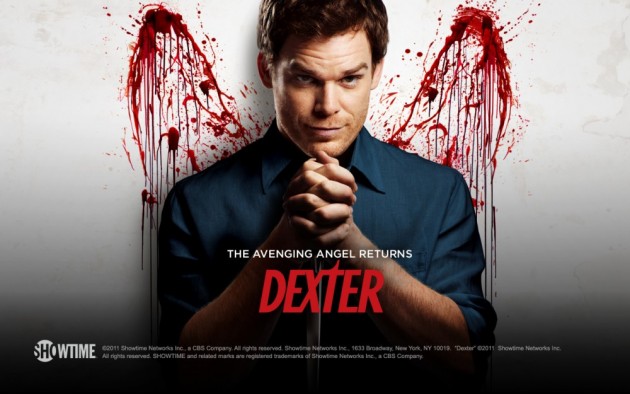
Chapter 5 “The Horror Auteur” looks at how the notion of authorship, normally excluded by TV critics in favor of a more cultural and industrial approach, has made a comeback of sorts but is inclusive rather than exclusive, incorporating the auteur as someone who wears many hats –producer-writer-director– such as Dan Curtis, Mick Garris, Joss Whedon, Kim Manners; the singular exception being the 2005 Showtime produced series Masters of Horror, which was produced by Mick Garris and designed as a showcase for the greatest contemporary horror directors to have a free rein to direct a “60 minute movie.” A notion of authorship particular to TV horror is the horror host, who is also connected to the show in one or more other creative roles, such as actor, writer, producer, or director. The King of the TV horror hosts (albeit a very reluctant one) was Rod Serling, who lent his authoritative tone and poetic cadence to The Twilight Zone and Night Gallery, the latter strongly etched in my own cultural consciousness as a major shaping influence to my experience of horror, especially with its incorporation of specially commissioned paintings which added the patina of legitimate art to the proceedings. Other hosts include Alfred Hitchcock of Alfred Hitchcock Presents, Boris Karloff of Thriller, and the (based on the EC comic book) Crypt keeper of Tales from the Crypt. Each host would shape the show according to their creative bent, with Twilight Zone and to a lesser extent Night Gallery, being a writer’s medium shaped by Serling’s sophisticated tastes for great past and present horror scribes. The chapter continues with discussions of two British writer-as-auteurs Nigel Kneale (writer of the seminal Quatermass serials) and Steven Moffat (from the new Doctor Who, 2009), and concludes with a return discussion of Masters of Horror, by concentrating on the only two episodes/directors, Dario Argento (“Jenifer,” and “Pelts”) and Takashi Miike (“Imprint”) whose episodes were met with some form of censorship, an aspect which the authors find helped link the show to past horror-related censorship battles (in particular the difficulty in the UK with viewing uncensored versions of Argento’s films) and ensure their endearment to horror fans who wear this treatment against their favorite genre as a badge of honor (while helping the resale value of the films on DVD, which promotes the “uncensored” versions). Indeed, Miike’s episode from Season 1 was the only one to have been seen as too extreme for US TV and was banned from its initial run in the US, making the DVD/BD release the only place for many fans to see Miike episode. Even factoring in these censorship issues, Masters of Horror was promoted –and by in large met this claim– as a space where horror auteurs could flex their imagination with more freedom than in theatrical cinema. In some respects MoH set the template for many other cable networks to produce shows which exceeded, in thematic and stylistic edginess, mainstream popular cinema.
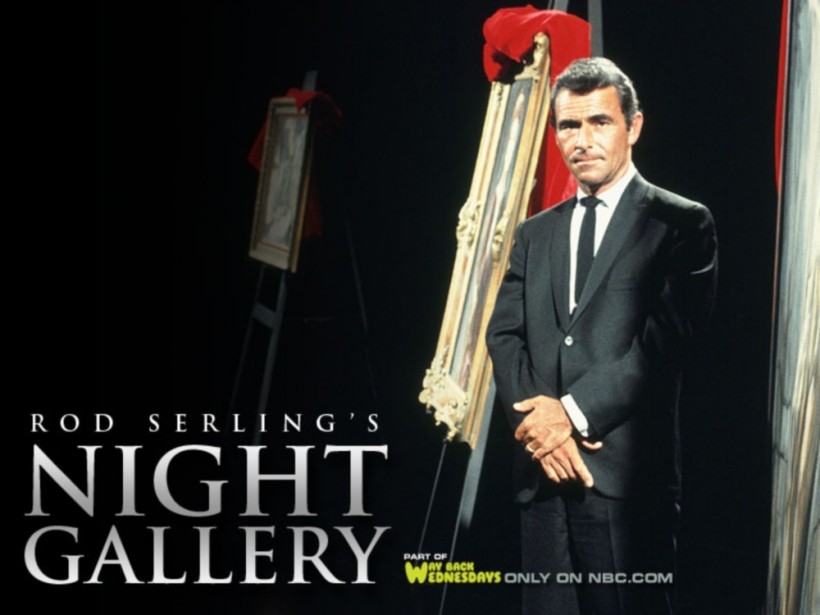
Chapter 6 examines the way TV has been a fertile area for a reimagining of the Gothic, often updating the visual or thematic element of classic Gothic with contemporary trimmings. A common over-arching theme being the idea of evil lurking below a benign or idealized surface (Twin Peaks, American Gothic, True Blood). The leading Gothic figure in TV horror remains the vampire, from sexy and extreme in True Blood’s sultry Southern milieu, to dull and quasi-scientific in the British Ultraviolent. Chapter 7 “The Excess of TV Horror” challenges the notion that TV is limited by its stricter content guidelines by arguing that, indeed, graphic depictions of gore are not a necessary or intrinsic aspect of horror in general. They use Kristen Thompson’s definition of excess as anything that calls attention to itself by not being grounded in narrative motivation; hence horror is often ‘excessive’ without necessarily being graphic because of the way excesses in visual, aural and narrative style often “stimulates affect” (p. 132).
Chapter 8, “Horror, Art and Disruption,” looks at the alliance between TV horror and art, or more properly, art cinema: TV shows which confuse the border between high art and low art by introducing ambiguous characters, oneiric and surreal mise en scène, formal experimentation, and liminal narratives . Examples cited and discussed include Twin Peaks, Carnivàle, Riget and Riget 2 (The Kingdom and The Kingdom 2). Chapter 9 looks at how TV as a technological medium can be thought of as a subject for horror. The authors contextualize the subject with prior instances of ‘haunted technology’ like 19th century ‘spirit’ photography (where the invisible or a deceased spirit could appear in a photograph). The authors cite Poltergeist as a film which treats the domestic television set as a portal for otherworldly existence (“They’re here!”); and point to its being referenced in an episode from Angel, “Smile Time.” 1 The authors argue that the ubiquity of TV makes it particularly apt as a tool to insidiously allow horror to invade, literally and figuratively, the sanctity of one’s home. The natural extension of this parallelism between TV as a subject of its own medium is the way many shows now have an online presence through mobile apps, spin-off web series’ and official websites that tap into a show’s dedicated fan base and allow fans to expand the world of their favorite TV shows and characters into their daily routines (online chat boards, discussion groups, fan writing, etc.)
The authors pick up this thread of the dedicated fan base in Chapter 10, “The Monster in Our Living Room,” by suggesting that this extended relationship between a TV show and its self-involved viewer (through the many outlets provided through the world of fandom) has led to the predominance in TV horror of the “sympathetic” monster: a lead protagonist who performs horrible acts but still remains, ostensibly, the show’s “hero” and the audience’s main focus of interest; in the process blurring the line between normality and the monster. The template for this “sympathetic monster” was Barnaby Collins of Dark Shadows, and continued on with such figures as Dexter from Dexter, Angel from Angel, brothers Dean and Sam from Supernatural, and Captain Jack Armstrong from Torchwood. The Chapter uses Dexter (Dexter as the serial killer boy next door), Dark Shadows (Barnabas the reluctant vampire), and Torchwood (Jack Armstrong as the immortal, “inhuman” figure) as case studies. The authors demonstrate that the rise of the “sympathetic monster” figure in TV horror presents a more complex interpretative framework for viewers to deal with. Dark Shadows by showing the sexy, attractive and tragic side of the “reluctant vampire”; Torchwood raising the stakes with its religious subtext in the form of its “almost messianic figure” (Armstrong is able to die and be reborn, Christ-like); and Dexter with its attractive, neo-conservative über-principaled serial killer (“America’s Favorite Serial Killer,” as trumped by its network, Showtime) who makes it his mission to rid society of his own kind (it takes one to know one) making the show a constant, muddy morality tale.
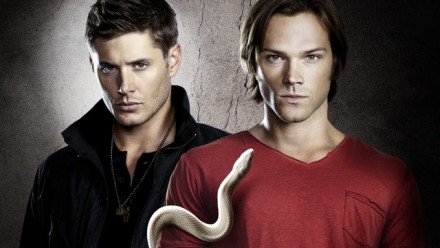
The Supernaturals
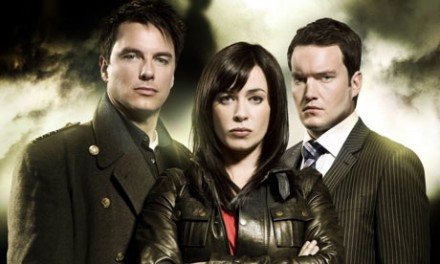
Torchwood
The reader of TV Horror will gain a greater appreciation of the breadth of both the content and the forms of televisual horror, in a writing style that is clear, intelligent and always engaging. The structure of case study approaches rather than strictly historical gives it freedom to compare and discuss shows across different periods and platforms. The authors write about these shows with great enthusiasm and attention to what makes each show unique or exemplary of a particular paradigm or form. They also do not cut corners. It shows that between them they have watched every episode of every show they discuss, and leave no stone unturned. So, for example, in their analysis of Dexter they factor in the two animated web show spin-offs (not uncommon for TV), Dexter: Early Cuts (2009) and Early Cuts: Dark Echo (2010). And DVD/BD featurettes are also mined for thematic insight or insider testimony. Too many film academics neglect the practitioners when it comes to understanding and explaining material. Hence it is nice as a practising methodology to see the authors explicate their subject, televisual horror, by referring as much to accounts of the makers of the shows (directors, writers, actors, producers such as Joss Wedon, Mick Garris, Rod Serling, Nigel Kneale, Chris Carter, etc.), as critics and theorists (Noel Carroll, Tzvetan Todorov, Julie Kristeva, Robin Wood, Peter Hutchings, Brigid Cherry, Adam Lowenstein, etc.). Both authors Lorna Jowett and Stacey Abbott come into this book on the strength of many previous publications on genre TV, including Abbott’s edited volume, Cult TV (2010, Tauris). Although there have been many book length studies on individual genre TV shows, like Dexter, X-Files, Outer Limits, and Twilight Zone, TV Horror marks the first to cover the whole of televisual horror, which makes it an essential contribution to the study of horror in general. Even a seasoned viewer of TV horror will discover many shows that they have never seen or heard of, and be encouraged to seek out. Such as, in my own case, Torchwood, Supernatural, Ultraviolent, Being Human, Pushing Daisies, League of Gentlemen, and Psychoville –all the latter being British, a fact which may place a North American reader in a position of potentially constant discovery. The latter two, described so deliciously well as examples of grotesque comedy-horror, seem especially worthy of tracking down. Thanks Stacey and Lorna. As if I didn’t have enough stuff to watch already!
Notes
- An excellent film that treated the phenomena of spirit photography with cinema anachronistically replacing photography as a conduit for the spirit world, is the British The Asphyx (1972, Peter Newbrook). With respect feature film as a possible influence, one could add Hideo Nakata’s groundbreaking Ringu, with the video tape, telephone and television all functioning as haunted technologies (who can forget its terrifying climax, where the ghostly girl crawls out of the television set into the victim’s living room). ↩



